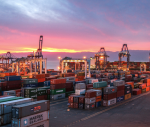You are here
Iran has again boosted uranium stockpile, says UN watchdog
By AFP - Nov 18,2021 - Last updated at Nov 18,2021
VIENNA — Iran has again boosted its stock of highly enriched uranium, the UN's nuclear watchdog reported on Wednesday, just days ahead of an expected visit by its chief to Tehran.
The International Atomic Energy Agency (IAEA) gave fresh estimates of Iran's uranium stockpile and complained of issues relating to its reduced access to Iran's facilities in two reports seen by AFP.
Diplomats are preparing to restart talks in Vienna on November 29 over reviving the moribund 2015 nuclear deal between Iran and world powers.
The remaining parties to the deal, Britain, China, France, Germany and Russia, will join the talks while the US will participate indirectly.
In one of its reports the IAEA estimated Iran's stockpile of highly enriched uranium as of November 6 at 2,489.7 kilogrammes, times in excess of the limit laid down in the 2015 agreement.
The total amount now includes 113.8 kg enriched to 20 per cent, up from 84.3 kg in September, and 17.7 kg enriched up to 60 per cent, up from 10 kg, the report said.
A spokesman for Iran's atomic agency told Fars news agency on Wednesday that IAEA chief Rafael Grossi would arrive in Tehran next Monday.
Grossi will meet Foreign Minister Hossein Amir-Abdollahian and Iranian Atomic Energy Organisation chief Mohammad Eslami on Tuesday, the spokesman added.
Grossi expressed concern on November 12 over his lack of contact with the new Iranian government of President Ebrahim Raisi, describing it as “astonishing”.
He said he had hoped to meet Iranian officials ahead of the next meeting of the IAEA’s Board of Governors, scheduled for next week.
During Grossi’s last visit to Tehran in September, he clinched a deal on access to monitoring equipment at Iran’s nuclear facilities.
But days later, the IAEA complained that it was prevented from “indispensable” access to a unit at the TESA complex in the city of Karaj, near Tehran, in violation of the September deal.
Iran’s ambassador to the IAEA however rejected the charge, tweeting that “equipment related to this complex are not included for servicing”, referring to IAEA work on its monitoring equipment.
The IAEA on Wednesday also “categorically” denied its cameras had played a part in an unclaimed June attack on the TESA complex.
Tehran, which has blamed its arch-enemy Israel, had told the agency it was investigating the possibility, the IAEA said in its report.
The agreement that Grossi reached in September was an extension of a deal struck in February after Iran limited some of the IAEA’s activities in the country.
However, Wednesday’s report warned that the repeated prolongation of the agreement was “becoming a significant challenge to the Agency’s ability to restore... continuity of knowledge” about Iran’s nuclear activities.
It warned specifically that establishing clarity on activities in Karaj “has been widely recognised as essential in relation to a return to the JCPOA”, referring to the 2015 nuclear deal.
The Vienna talks later this month will discuss the possibility of reviving that agreement, which offered Tehran relief from sanctions in exchange for major curbs on its nuclear activities.
The US unilaterally pulled out of the JCPOA in 2018 under the administration of president Donald Trump.
In response, Iran began in 2019 walking back on its commitments under the nuclear deal, notably increasing its uranium enrichment.
In a separate report also issued on Wednesday, the IAEA said there had been virtually no progress in resolving several questions the agency has about the previous presence of nuclear material at undeclared sites in the country.
That report also noted that Grossi was “concerned by the incidences of Agency inspectors being subjected to excessively invasive physical searches by security officials at nuclear facilities” and called on Iran to “take immediate steps to rectify the situation”.
Related Articles
TEHRAN — Iran and a UN watchdog said Wednesday they have reached agreement on replacing cameras at a nuclear complex, as Western powers warn
VIENNA — The head of UN's nuclear watchdog said Monday that inspectors would "in a few days" visit the second of two sites in Iran where und
TEHRAN — Iran and the UN atomic agency on Sunday announced the IAEA will keep up surveillance of Tehran's nuclear activities, soothing a sor
















